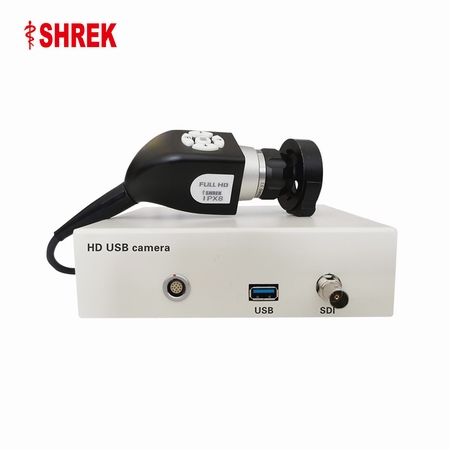The Advancements and Applications of HD USB Endoscope Camera: A Comprehensive Overview
The use of endoscopes has revolutionized the field of medical diagnostics and surgical interventions, enabling physicians to visualize and access internal organs and cavities through a minimally invasive approach. With the advent of digital technology, endoscopy has further evolved to incorporate high-definition (HD) cameras, providing improved image quality and visualization. The HD USB endoscope camera is a particularly significant innovation, enabling real-time monitoring and recording of procedures on a variety of platforms.

The HD USB endoscope camera is a small, lightweight device that connects to a computer or other digital device through a USB port. It typically consists of a camera head, an insertion tube, and a light source. The camera head contains a lens and a light sensor that captures high-resolution images of the target area, while the insertion tube provides access to the site of interest. The images captured by the camera are then transmitted to the connected device in real-time, providing live visualization of the procedure.
One of the primary advantages of HD USB endoscope cameras is their portability and ease of use. They can be connected to a variety of devices, including laptops, tablets, and smartphones, providing flexibility in terms of the location and setting of the procedure. They are also relatively inexpensive compared to traditional endoscopy equipment, making them more accessible to a wider range of healthcare providers.
HD USB endoscope cameras have a wide range of applications across various medical specialties, including gastroenterology, urology, and gynecology. In gastroenterology, they are used for procedures such as colonoscopies and upper endoscopies, providing detailed visualization of the digestive tract. In urology, they can be used to diagnose and treat conditions such as bladder cancer and kidney stones. In gynecology, they are useful for procedures such as hysteroscopies and laparoscopies, enabling the visualization of the reproductive organs.
Apart from clinical applications, HD USB endoscope cameras have also found utility in non-medical fields such as industrial inspections and veterinary medicine. In industrial settings, they are used for inspection of machinery, pipes, and other inaccessible areas, while in veterinary medicine, they are used for diagnosis and treatment of animals.
In conclusion, the HD USB endoscope camera represents a significant advancement in the field of endoscopy, providing improved image quality, portability, and versatility. Its applications are diverse, with the potential to improve diagnostics and surgical interventions across various medical specialties. As technology continues to evolve, it is likely that further innovations will be made, further expanding the capabilities and potential of this technology.



Leave a message